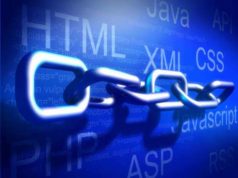
Laws Against Hacking and How to Prevent It
Introduction
In our increasingly interconnected world, where digital technology plays a pivotal role in our daily lives, the importance of cybersecurity cannot be overstated. Hacking, the unauthorized access to computer systems and networks, poses a significant threat to individuals, businesses, and governments alike. To combat this threat, governments worldwide have enacted laws and regulations designed to deter hackers and protect their citizens. In this article, we will explore the laws against hacking and the measures individuals and organizations can take to prevent it.
Part 1: Laws Against Hacking
1.1 The Computer Fraud and Abuse Act (CFAA) – United States
The United States has a robust legal framework to combat hacking, with the Computer Fraud and Abuse Act (CFAA) being one of the most significant pieces of legislation. Enacted in 1986, the CFAA makes it illegal to access computer systems without authorization or exceed authorized access. It also criminalizes activities like distributing malicious software, stealing sensitive information, and damaging computer systems. Violators can face fines and imprisonment.
1.2 The European Union’s Cybersecurity Act
The European Union (EU) has also taken significant steps to combat hacking with the Cybersecurity Act. This regulation aims to enhance the EU’s cybersecurity capabilities and improve coordination among member states. It includes provisions for incident reporting and the establishment of a certification framework for information and communication technology (ICT) products and services, ensuring they meet stringent cybersecurity standards.
1.3 The Computer Misuse Act – United Kingdom
The United Kingdom’s Computer Misuse Act criminalizes unauthorized access to computer systems, as well as the creation and distribution of malware. The act distinguishes between three offenses: unauthorized access to computer material, unauthorized access with intent to commit or facilitate the commission of further offenses, and unauthorized modification of computer material. Penalties under this act can include fines and imprisonment.
1.4 Global Cybersecurity Conventions
Various international conventions address cybersecurity and hacking issues, including the Budapest Convention on Cybercrime and the United Nations’ International Telecommunication Union (ITU) initiatives. These conventions aim to foster cooperation among nations, facilitate information sharing, and harmonize legal approaches to combat hacking on a global scale.
Part 2: Preventing Hacking
2.1 Strong Passwords and Multi-Factor Authentication
One of the simplest yet most effective ways to prevent hacking is by using strong, unique passwords for all online accounts. Passwords should be complex, with a combination of letters, numbers, and special characters. Additionally, enabling multi-factor authentication (MFA) adds an extra layer of security by requiring a second form of verification, such as a fingerprint or a one-time code sent to your phone.
2.2 Regular Software Updates
Hackers often exploit vulnerabilities in outdated software. To prevent this, it’s crucial to keep all operating systems, applications, and antivirus software up to date. Software updates often contain patches for known security flaws, making it harder for hackers to breach your system.
2.3 Firewalls and Intrusion Detection Systems
Firewalls act as barriers between your network and potential threats from the internet. Configuring a robust firewall can help block unauthorized access attempts. Intrusion Detection Systems (IDS) and Intrusion Prevention Systems (IPS) can also monitor network traffic for suspicious activity and take action to prevent attacks.
2.4 Employee Training and Awareness
Many successful hacks result from social engineering tactics, such as phishing emails or social manipulation. Training employees to recognize and report such threats is essential for an organization’s security. Regular awareness programs can help employees stay vigilant and informed about the latest hacking techniques.
2.5 Data Encryption
Encrypting sensitive data, both in transit and at rest, is critical. Encryption converts data into unreadable code, which can only be decrypted with the appropriate key. This ensures that even if hackers gain access to your data, it remains unintelligible to them.
2.6 Penetration Testing and Vulnerability Scanning
Regularly testing your systems for vulnerabilities through techniques like penetration testing and vulnerability scanning allows you to identify and address potential weaknesses before hackers can exploit them. This proactive approach to security can significantly reduce the risk of a successful hack.
Conclusion
Hacking poses a severe threat to individuals, organizations, and governments, but legal frameworks and preventive measures are in place to combat this menace. Laws like the CFAA in the United States and the EU’s Cybersecurity Act provide a legal basis for prosecuting hackers, while preventive measures such as strong passwords, regular updates, and employee training can help individuals and organizations protect themselves from cyber threats. By combining legal deterrence with robust cybersecurity practices, we can work towards a safer digital world for everyone.
What is Hacking?
Computer hacking refers to the practice of modifying or altering computer software and hardware to accomplish a goal that is considered to be outside of the creator’s original objective. Those individuals who engage in computer hacking activities are typically referred to as “hackers.”
The majority of hackers possess an advanced understanding of computer technology. The typical computer hacker will possess an expert level in a particular computer program and will have advanced abilities in regards to computer programming.
Unlike the majority of computer crimes which are regarded as clear cut in terms of legality issues, computer hacking is somewhat ambiguous and difficult to define. In all forms, however, computer hacking will involve some degree of infringement on the privacy of others or the damaging of a computer-based property such as web pages, software, or files.
As a result of this loaded definition, the impact of computer hacking will vary from a simple invasive procedure to an illegal extraction of confidential or personal information.
Definitions of Hacking
The New Hacker’s Dictionary, a resource used to elucidate upon the art of computer hacking, has defined the practice through an assortment of definitions:
A hacker may be defined as any person who enjoys exploring the intricacies of programmable systems and how to stretch their capabilities. This definition is held in contrast to a generic computer user, who prefers to access a computer’s minimal functions;
One who programs or who enjoys programming, as opposed to those individuals who simply theorize about programming;
An individual who possesses exceptional skill regarding computer programming;
A malicious meddler who attempts to discover and subsequently tamper with sensitive information through poking around computer-based technologies. These individuals are commonly referred to as “network hackers” or “password hackers.”
Regardless of the definition, there are unwritten rules or principles that a hacker will ultimately live by. The belief that information sharing is a powerful exercise and that is the ethical duty of hackers to share their expertise through the creation of free software and through facilitating access to information and to computing resources is a fundamental code for which the majority of hackers follow. In addition, computer hacking as a practice revolves around the belief that system-cracking as a hobby or for fun is ethically okay so long as the hacker commits no vandalism, theft, or a breach of confidentiality.
Issues of Computer Hacking
Computer hacking possesses a mixed perception. Due to our reliance on computer technologies and the critical information shared on networks, the art of computer hacking has been skeptically viewed. That being said, there is also a “Robin Hood” mentality attached to the practice, where free programs or facilitated measures have been awarded to the average computer user.
The primary issue attached to computer hacking stems from an individual’s ability to access crucial or personal information that is found on a computer network. The ability to retrieve and subsequently tamper with such information will give way to the potential to commit heinous criminal acts.
Ways to Prevent Computer Hacking
Educational institutions must clearly establish use policies and delineate appropriate and inappropriate actions to all individuals who access information via a computer. The use of filters or firewalls may be considered to reduce access to unauthorized software serial numbers and other hacking-related materials.































